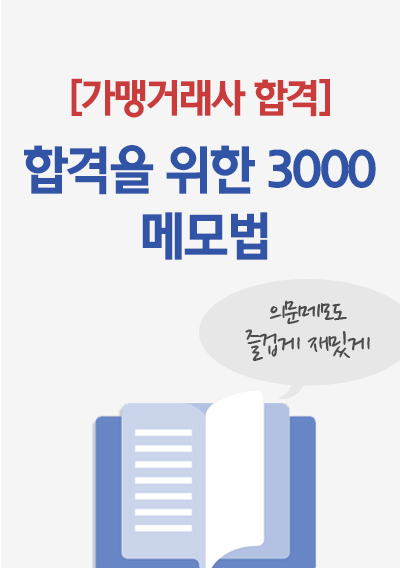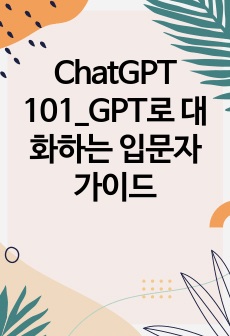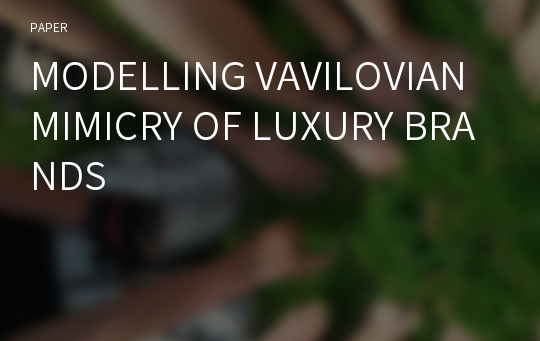MODELLING VAVILOVIAN MIMICRY OF LUXURY BRANDS
* 본 문서는 배포용으로 복사 및 편집이 불가합니다.
서지정보
ㆍ발행기관 : 글로벌지식마케팅경영학회(GFMC)
ㆍ수록지정보 : GFMC Session1
ㆍ저자명 : Min Teah, Ian Phau
ㆍ저자명 : Min Teah, Ian Phau
영어 초록
The notion of brand mimicry is not a new one. Drawing its roots from Darwin’s theory of evolution, Bate (1862, 502) described mimicry as a visible “resemblance in external appearance, shapes and colours between members of widely distinct families”. Further development of the theory led it to the concept of natural selection and the survival of the fittest. In order to survive, many organisms in nature employ mimicry (Vane-Wright, 1976). This strategy is similarly reflected in marketing (Kapfarer, 1995; Shenkar, 2010; 2012) and has been deemed as a form of “imitative innovation” (Levitt, 1966). Based on the accounts of the rampant copying in the industry, there is evidence that there are observed parallels between the types of mimicry identified in the discipline of biological and natural sciences and mimicry in marketing. However, there is still very little that is known within this area at present. In addition, based on the review of the key classification studies within the discipline of biological and natural sciences (Vane-wright, 1976; 1980; Pasteur, 1982), Vavilovian mimicry was identified. Vavilovian mimicry was found to convey a close resemblance to mimicry in marketing. Therefore, the development of a scale serves as a foundation to conceptualize the theory of mimicry further into the luxury-branding context within marketing.Mimicryis defined as the visible “resemblance in external appearance, shapes and colours between members of widely distinct families” (Bates, 1865, 502). There are three key roles in the system of mimicry, which are namely the model, the mimic and the signal receiver (dupe/operator) (Pasteur, 1982; Vane-Wright, 1976). The mimic, is the imitating organism that can be any species of organism produces a mimetic signal; the model, is the entity that is being imitated; and the signal receiver or operator (Vane-Wright, 1976), or sometimes termed as the dupe is the organism that is duped to believe similarities between the mimic and the model.
Vavilovian mimicry in nature
Vavilovian mimicry is classified as a form of crop mimicry (Pasteur, 1982; Barrett, 1983) that involves weeds, such as rye (Secale) that mimicked the first crops of man (dupe) through their evolution in the wheat (model) fields (Williamson, 1982). Subjected to the methods of man to gather and separate weed from wheat, rye have developed seeds and seed dispersal mechanisms that mimicked those of wheat (Williamson, 1982). Through such means, rye has forcefully made its way into being accepted by man and to compete with wheat in the fields. Based on Vavilov’s (1951) explanation, he calls the cereals (e.g. rye, domestic oats, rye, etc.) that originated from mimetic weeds as secondary crops. This form of mimicry is the result of unintentional selection by human beings due to the close similarities between the mimic and the model (Barrett, 1983). Therefore the mimic can evade eradication as a result (Vane-Wright, 1976).
Vavilovian mimicry in marketing
There are a number of parallels found within marketing that can serve to explain Vavilovian mimicry. One of the brands that employed the Vavilovian mimicry strategy lies within the beverage sector and is none other than Nudie Juice. Nudie Juice (mimic) started in 2002 by employing similar strategies to that of Innocent Juice (model) from the UK (Diagram 2). Nudie Juice has drawn many similarities from Innocent Juice such as the brand character (a small child like character), the packaging, and the concept of offering “premium fruit juice”. While many critics and consumers have suggested high level of similarities between the two brands (Ho, 2005), the founder Tim Pethick argued that they are not the same. It was suggested he initially drew inspiration from Innocent Juice but has evolved the brand from being similar to “something different” (Ho, 2005). After more than a decade in the Australian market, the Nudie brand has evolved from juice to beyond just another juice brand to differentiate from Innocent Juice.
Therefore, based on the above examples, Vavilovian brand mimicry is when the mimic deceives or possibly confuses the signal receiver through symbolic and functional similarities, but as a result evades prosecution. Subsequently, it evolves, innovates and establishes itself away from the model brand over time and becomes an independent brand. They are often moderately similar mimics or so called imitative innovations.
Method and Results
Two studies were designed to develop the Vavilovian mimicry scale. All the studies were based on an experimental approach and were conducted in a classroom style setting using a homogenous sample aged between 18 to 35.
Study One
The purpose of Study One was to explore the concept of Vavilovian mimicry. In line with the scale development outlined by DeVellis (2003), it is important that existing theory should be reviewed and consulted prior to developing the scale. This study will closely follow the procedures set out by DeVellis (2003), Churchill (1979) and Li, Edwards and Lee (2002) using three methods to generate potential scale items which are 1) a thorough literature review, 2) thesaurus searches, and 3) expert surveys. Through the three techniques, an initial pool of 55 items was identified.
The pool of items that was initially generated for Vavilovian mimicry scale was tested using a series of stimuli of real life brands befitting the concept of Vavilovian mimicry within the luxury branding industry (e.g. Lacoste vs. Crocodile, Rolls Royce vs, Geely). The product stimuli were pre-tested on a group of judges to ensure that the concept of Vavilovian mimicry is accurately measured. The stimuli were kept constant in the number of pairs of brands, and the duration to the stimuli that the subjects are exposed was all controlled for in the experiments.
The first set of scales developed for Vavilovian mimicry was administered to a sample size of 195 respondents. Students were used as it has been indicated in past studies that students are appropriate subjects for scale development as they serve as surrogate consumers (Yavas, 1994). The data is checked for missing values and responses that are either incomplete or inappropriately completed are removed. Hence, only 177 useable responses were retained.
Results of EFA
As the study intended to develop scales to measure Vavilovian mimicry, the initial pool of items were cleaned to reveal five factors that seem to qualify as potential items for use. Items with double or triple loadings and that show factor loadings below .3 were eliminated. The items in the other unexpected factors were examined and items that were found to have little relevance to the study were removed. From the 55 items that were factor analyzed, 23 items remained within that is used to measure Vavilovian mimicry (α = .947; KMO and Bartlett’s test =.000; .808). From the factor analysis, the inconsistent items were also removed based on the co-efficient alphas (Nunnally, 1978). The initial Cronbach’s alphas for the factors were above .7, suggesting that the initial scales are still considerably long. As such, the next stage will be to optimize the scale length and to purify the data.
Study Two
This stage was performed to examine the dimensions of the scales in Study One, and to further purify the items. Churchill (1979) suggested that the scale purification step is to examine the dimensionality of the items. Confirmatory factor analysis (CFA) has been used to reduce scales by identifying the items that needs to be trimmed from the scale, which assists by confirming the scale in its final form (Netemeyer, Bearden & Sharma, 2003) using AMOS 19.
A new survey instrument is produced consisting of the 23-item Vavilovian mimicry items, as well as the demographics collected in Study One. Respondents were exposed to only stimulus (pair of brands) that is tested to show Vavilovian mimicry and asked to respond to a self-administered survey. The respondents are students who fall between 18 to 35 years of age. Useable responses for this study was 206.
Results of CFA
Prior to completing the measurement model, the congeneric model for each of the factors within the Vavilovian mimicry scale is tested to ensure model fit before testing it as a measurement model. CFA further refined the scales resulting in three dimensions, which are namely symbolic characteristics, physical characteristics and beneficial characteristics. Symbolic (Chi-Square =9.390, Degrees of Freedom = 8, Probability level = .310, RMSEA = .029, RMR = .033, AGFI = .956, CFI = .998) and physical characteristics (Chi-Square =12.571, Degrees of Freedom = 11, Probability level = .322, RMSEA = .026, RMR = .029, AGFI = .954, CFI = .998) dimensions resulted in seven items each and beneficial characteristics (Chi-Square =3.203, Degrees of Freedom = 2, Probability level = .202, RMSEA = .054, RMR = .018, AGFI = .954, CFI = .997) resulted in five items. According Raubenheimer (2004), multi-dimensional scales should have a minimum of three items to load significantly on each factor in order to be successfully identified.
Based on the congeneric models for the three dimensions of Vavilovian mimicry, it is shown by the results to achieve acceptable measures (Hu and Bentler, 1999). These three factors are then being used in the measurement model to ensure that the three dimensions of the scale are of acceptable measures.
In the next step of the measurement procedure, the three-factor structure was tested using CFA (Kelloway, 1998). Based on the measurement model (Figure 1), model identification was achieved with the 15 items and the model fit statistics are found to be of acceptable range and can be used for further analysis (Hu and Bentler, 1999) Chi-Square =104.183, Degrees of Freedom = 83, Probability level = .058, RMSEA = .035, RMR = .063, AGFI = .914, CFI = .989).These 15 items have indicated a good model fit within three dimensions. The scale items were validated using predictive, nomological, convergent and discriminant validity tests.
The paper is one of the first (at the time of the study) to develop a scale to measure Vavilovian mimicry. The final 15 items for the scale fills an important gap in the literature as it conceptualizes and measures a specific type of mimicry that is abundant in the marketplace. At present, studies have yet to extend the established theory of mimicry from the discipline of biology and natural sciences. In addition, the scale allows the model brand managers, mimic brand managers and policy makers to better identify the type of mimicry that are in question. In addition, rather than only addressing mimicry from the luxury brand owners’ perspective, the Vavilovian mimicry scale allows mimic brand managers to understand if Vavilovian mimicry is an effective innovation strategy to deploy. Typically, policy makers have often struggled in copyright laws and identifying different types of infringement in the marketplace, especially when understanding consumer confusion in relation to brand “copycats”. This Vavilovian mimicry scale can be used to measure and identify mimics more effectively and therefore to have better strategies in either educating consumers or to formulate policies and strategies. This study provides insights into means to address competition from mimic brands especially in countries such as China.
However, at present the scale is currently still under development and requires further validation and generalization. Future studies will need to measure construct, criterion, discriminant and convergent validity. Furthermore, the scale warrants generalizability across specific product luxury product categories such as cars, jewellery, clothing and so on. In addition, the scale will need to be tested in relation to other constructs such as brand familiarity, consumer perceptions and evaluations in order to understand the true extend and influence of brand mimicry. Lastly, this study attempts to bridge the gap in the literature and pave the foundation to better understanding of brand mimicry.
참고 자료
없음"GFMC Session1"의 다른 논문
 FAST AND SLOW FASHION BRANDS IN DEVELOPING SUSTAINABLE ..6페이지
FAST AND SLOW FASHION BRANDS IN DEVELOPING SUSTAINABLE ..6페이지 “WHAT IF A CELEBRITY AND A BRAND CO-CREATE A NEW COLLEC..7페이지
“WHAT IF A CELEBRITY AND A BRAND CO-CREATE A NEW COLLEC..7페이지 THE INSTAGRAM’S STRATEGY IN ENGAGING THE CUSTOMER’S LOY..3페이지
THE INSTAGRAM’S STRATEGY IN ENGAGING THE CUSTOMER’S LOY..3페이지 THE PARTICULARITIES OF NEW PRODUCT DEVELOPMENT IN THE T..5페이지
THE PARTICULARITIES OF NEW PRODUCT DEVELOPMENT IN THE T..5페이지 THE LONE CHOCOLATE BAR: THE INFLUENCE OF PERCEIVED SCAR..6페이지
THE LONE CHOCOLATE BAR: THE INFLUENCE OF PERCEIVED SCAR..6페이지 ADS AS WORKS OF ART: MEASURING ADVERTISING IMMERSION3페이지
ADS AS WORKS OF ART: MEASURING ADVERTISING IMMERSION3페이지 ECONOMIES OF SMALL: NICHE STRATEGIES AND SUCCESS FACTOR..8페이지
ECONOMIES OF SMALL: NICHE STRATEGIES AND SUCCESS FACTOR..8페이지 THE INFLUENCE OF ONLINE CUSTOMER REVIEWS ON RETAILERS' ..6페이지
THE INFLUENCE OF ONLINE CUSTOMER REVIEWS ON RETAILERS' ..6페이지 IS THE ARTIFICATION PROCESS PERCEIVED BY FINAL CONSUMER..6페이지
IS THE ARTIFICATION PROCESS PERCEIVED BY FINAL CONSUMER..6페이지 THE ODD EVEN PRICE PARADOX IN THE FASHION LUXURY SECTOR6페이지
THE ODD EVEN PRICE PARADOX IN THE FASHION LUXURY SECTOR6페이지

























